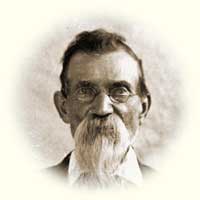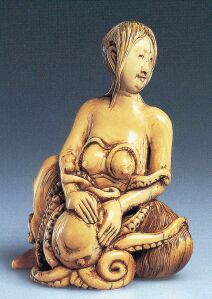 Joshua Handley was a minor artist who made a living by producing a seemingly endless stream of engravings for the publishers of erotic literature, an occupation which demanded some nerve as one could at any time be arrested on charges of obscenity. Most of Handley's illustrations have disappeared into oblivion along with the literature which they illustrated, but can still be encountered upon occasion in histories of Victorian erotica and the like. Most such illustrations were unsigned for obvious reasons, but it is said that Handley's vivid style is distinctive and easily recognised.
Joshua Handley was a minor artist who made a living by producing a seemingly endless stream of engravings for the publishers of erotic literature, an occupation which demanded some nerve as one could at any time be arrested on charges of obscenity. Most of Handley's illustrations have disappeared into oblivion along with the literature which they illustrated, but can still be encountered upon occasion in histories of Victorian erotica and the like. Most such illustrations were unsigned for obvious reasons, but it is said that Handley's vivid style is distinctive and easily recognised.
In 1882 Handley was invited to travel to Japan as an illustrator and photographer, by Sir Neville Thripp, an ardent Japanophile and a distant cousin of Handley. Sir Neville was determined to explore and document the less well-known aspects of Japanese and culture, with a view to producing a series of illustrated folios which he believed would sell well to aficonados of the unusual, and knew that Handley had much experience in producing illustrations of an unconventional nature. In addition - and this was no small detail at the time - he knew that Handley could be trusted to observe the strict secrecy that the production of such publications would require.
While in Japan, Handley took innumerable photographs of Japanese life, some of which have found their way into reputable collections; he was a skilled photographer, despite the technique of the period still being based on glass plates and large quantities of chemicals. The erotic illustrations, or "Pillow Books" of Japan were naturally a source of great fascination to him, especially in how their frank attitude towards sexual matters contrasted with Western attitudes of the time. But what particularly caught his attention was a 3-volume ukiyo-e 1 erotic book Kinoe no Komatsu (Young Pine Shoots) by Hokusai 2, published around 1814, and most particulary the several woodblock prints of octopi and female pearl divers in intimate situations contained in the work 3.

Hokusai: Woman diver and Octopus, 1814 |
Handley had discovered the great obsession which was to dominate the rest of his life. While in Japan he purchased and commissioned a great number of similar works by Japanese artists, much to the puzzlement of his companion, Sir Neville Thripp who, though non-judgmental of others' quirks, nevertheless found Handley's new-found interest thoroughly baffling.

Shugetsu the First: Ivory, late C18th |
Upon returning to England Sir Neville's project fell through, as the Paris publisher who had previously agreed to publish his folios withdrew, claiming that the material Sir Neville intended to publish was too much even for his enlightened tastes, and saying that they would never sell. Handley's illustrations and photographs were subsequently abandoned by Sir Neville, who washed his hands of the whole scheme, and turned to producing unremarkable flagellation literature of the type so beloved of English aficionados of the time.
It was at this time that Handley, dissatisfied with the erotic literature that he had previously illustrated, and at the crest of his obsession with octopi, began to write and illustrate erotica of his own, but erotica of a most unconventional nature.
His tales invariably began quite unremarkably, and the first pages could almost be mistaken for an adventure novel of the period: a female pearl diver, a shipwrecked gentlewomen, or an unwary (lady) bather would fall prey to a wily octopus, and become enmeshed in its vigorous tentacles. But what's this? Can it possibly be that the ladies in question are not struggling against their cold-blooded captor's rough advances as wholeheartedly as might be expected? That they are, in fact, succumbing to the rude blandishments of tentacle and sucker?
Sadly, his work found no favour with any of the publishers of unconventional literature with whom he had collaborated in the past, and indeed alienated a good few of them. Even the famously tolerant Sir Neville Thripp was driven to express his disquiet; it was one thing to depict ladies being ravished by cephalopods, he told Handley in a letter, and indeed quite titillating to a certain sadistic type of person, but quite another to suggest that they might be enjoying the experience 4.
Handley, thoroughly depressed and even ashamed of his tastes, abandoned all involvement with pornography and turned instead to illustrating children's books, using his mother's maiden name to obscure his identity, and earned a certain reputation as a capable and competent workman, whose sea monsters and octopi were always especially vivid...
1. Ukiyo-e - literally, "Pictures Of The Floating-World". See this useful essay for further details.
2. Famous ukiyo-e artist, Katsushika Hokusai, the same person who gave the world famous paintings such as '36 Views of Mt. Fuji' and 'The Wave'.
3. Artist Masami Teraoka carries on the ukiyo-e tradition to the present day; a selection of his prints which includes a woman-and-octopus example can be viewed online here.
4. One wonders if HG Wells had somehow heard of Handley's importunate molluscs when he devised the betentacled and distinctly octopoidal Martians which feature so unforgettably in "The War of the Worlds" though, sadly, no Victorian gentlewomen are menaced as such by the Martians except in order to have their blood drained. I would really not care to know if anyone has written Martian tentacle pornography, so please do not tell me if this is the case.
Dr. Kilmarnock's Obscure World of Victorian Erotica
© Heliograph Designs 2023.
Questions? Comments? Email me!

